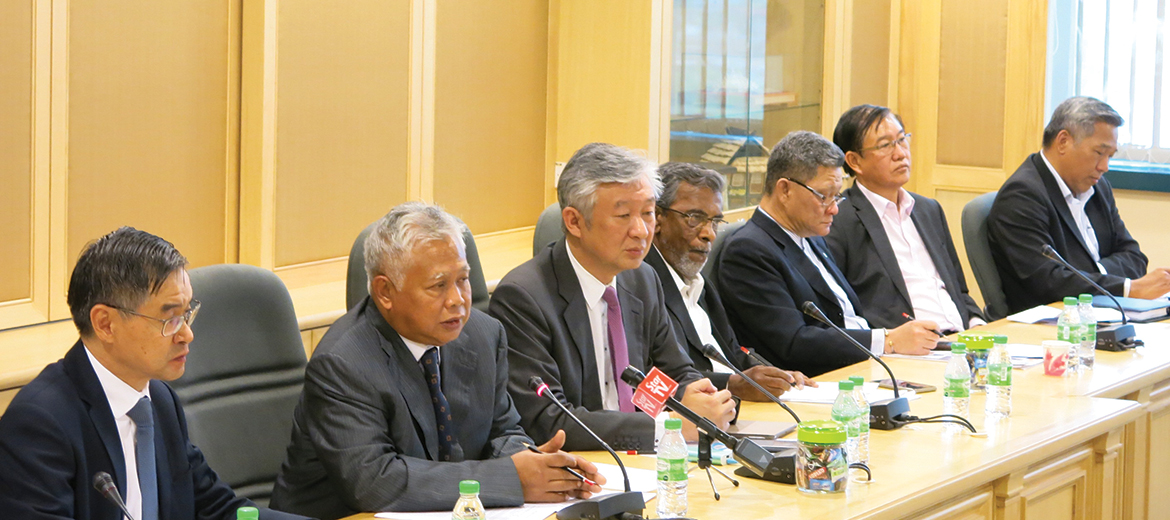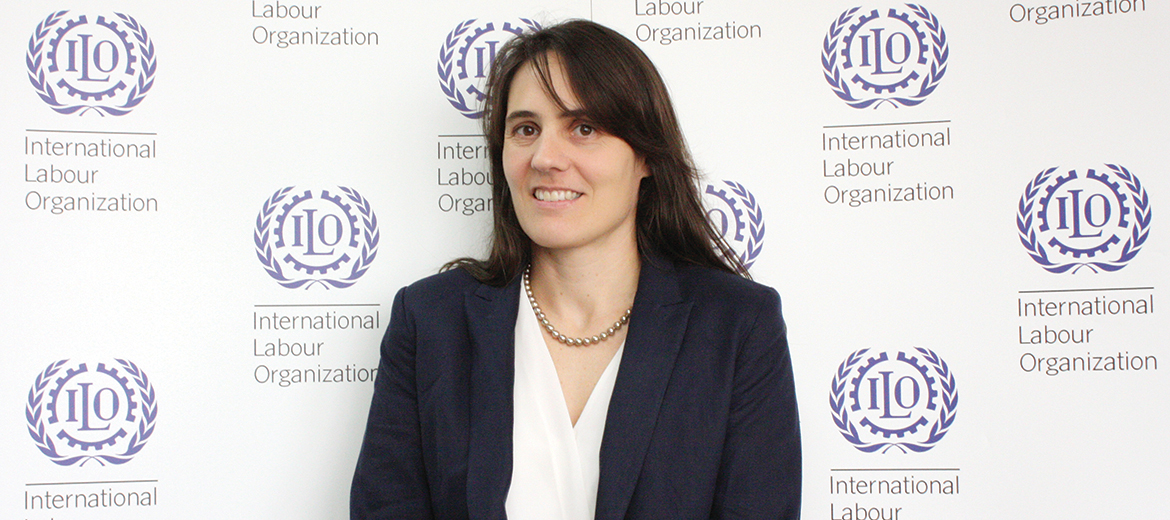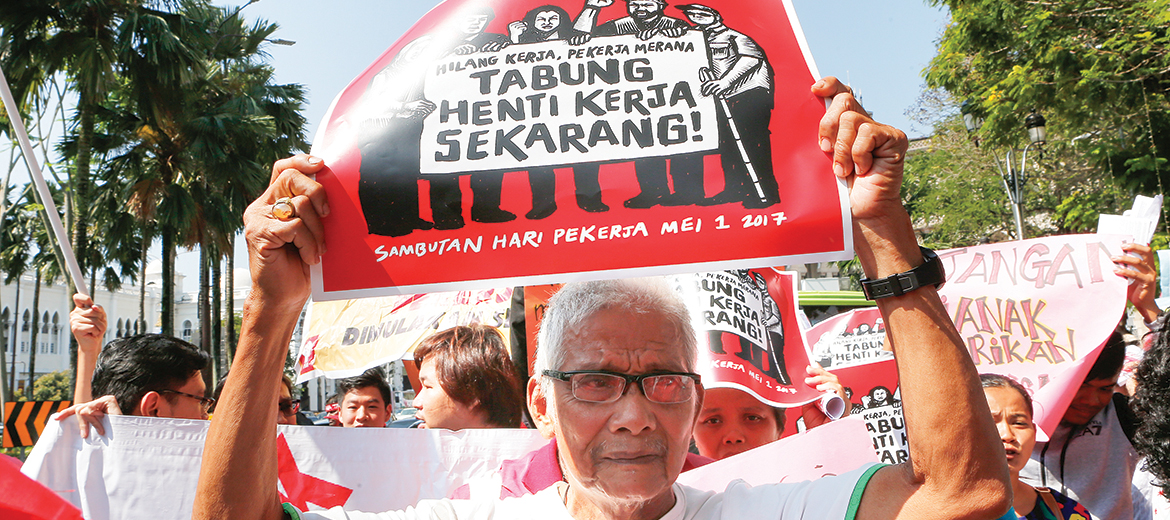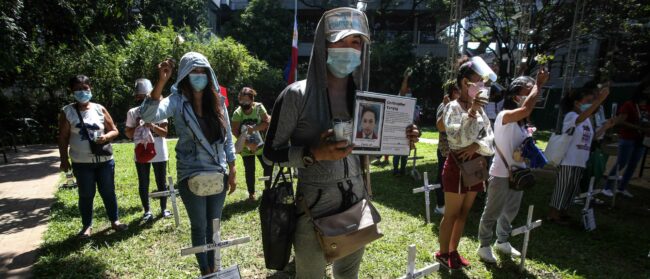Conrad Nge knew his retrenchment was coming. The instrument designer in a Malaysian oil and gas firm saw four batches of colleagues dismissed before his turn came last year.
Malaysia had been through a tough two years. The oil price slump and economic crunch led to mass layoffs, even in industries that once promised sturdy rice bowls. In 2016, according to figures from the country’s Human Resources Ministry, 37,699 workers were axed from various sectors including oil and gas, banking, aviation and manufacturing.
What Nge did not expect was to find himself being made redundant again within a few months of starting a new job in a construction firm.
A bachelor who lives with his parents, he is not financially desperate yet. The 43-year-old told Southeast Asia Globe that he has enough savings to tide him over for a year.
Most Malaysians are not as durable. In 2015, a survey by the country’s central bank showed that 94% of respondents did not have the reserves to meet financial obligations for six months in the event of job loss.
To provide a safety net for the shallow-pocket majority, the government is gunning for the Employment Insurance Scheme (EIS). Slated to begin early next year, Malaysia will be the third country in Southeast Asia to introduce unemployment protection, after Thailand and Vietnam.
Employers and employees jointly pay a premium for the insurance every month. In the event of being made redundant, workers will receive temporary income replacement and job search assistance.
Even with enough money squirreled away, Nge is keen on the scheme.
“Just in case retrenchment happens to me again, at least there is a sort of reimbursement, a safety net,” he said.
The safety net, however, is off to a flimsy start. In August, the Malaysian government tabled the EIS bill in parliament to a chorus of dissent. One major contention from employer and worker groups is the contribution rate, which is about 1% of monthly wages split between employers and employees.

They argue that the burden is too high, with a joint statement issued in March by 94 industry groups stating: “The company and their workers will be penalised, as revenues and wages will continue to be deducted on a monthly basis every year, even when the economy is performing well with no retrenchment.”
Following the backlash, the bill was deferred for revision. At the time of writing, it was due to be re-tabled when the parliament convened in late October.
This is nothing new for a scheme that was 20 years in the making – or, perhaps, breaking. Discord is the main theme of this rhapsody.
Calls for unemployment protection have been repeatedly strangled and resurrected since the 1997 Asian financial crisis. The government, unions and employers continuously refined the idea, mostly against a backdrop of tripartite bickering.
Since the bill’s deferment in August, four ministers have met with the stakeholders. They agreed to slash the contribution rate to 0.4% of monthly wages.
Meanwhile, more downsizing is on the cards. Malaysia’s national oil corporation Petroliam Nasional Berhad (Petronas) “cannot promise” that job cuts will cease this year. Meanwhile, 11 multinational manufacturers, including British American Tobacco and Seagate Technology, are also expected to shut plants by December.
Fearing that she is next, a senior executive who only wanted to be identified as Zu is backing the EIS. “But what I’m really concerned with is how the fund… will be managed,” said Zu.
In a nation notorious for public fund scandals, she is far from the only one to have such jitters.
One of them is Joseph Solomon, secretary-general of the Malaysian Trade Union Congress (MTUC), the umbrella body for trade unions in Malaysia. He is uneasy about the EIS committee, which consists of members from the government, unions and employers.
“EIS is contributed monthly by employees and employers. But their voices in the decision-making process is weak. Out of the 20 members in the EIS committee, there will only be a maximum of six people representing the workers and employers,” said Solomon.

He wants a fairly represented three-party body to manage the fund instead.
Shamsuddin Bardan, executive director of the Malaysian Employers Federation (MEF), concurred. He emphasised that clear governance of EIS is especially necessary due to its large surplus.
At the time of writing, contribution terms are up in the air, rendering it tricky to calculate the size of the fund. But estimates from industry groups and an opposition lawmaker range from RM1 billion to RM2 billion ($234m to $468m) in the first year alone.
Should the bill be passed, EIS participation will be compulsory for all 6.5 million Malaysian employees protected by the Social Security Organisation (Socso), which is tasked to manage the fund. While the annual retrenchment rate for the past five years hovers around 30,000, the government suspects that the figure could be under-reported.
Socso CEO Mohammed Azman Aziz Mohammed, however, told local business weekly the Edge that as many as 300,000 could benefit from the scheme. Even if this became the case it equates to only 4.6% of EIS participants – tallying up somewhat perfectly with anti-EIS employers, who have long argued that the scheme would benefit few at the expense of many.
Malaysia has maintained nearly full employment status for the past few years, with the unemployment rate at about 3%. But this is precisely why EIS is timely, according to the International Labour Organisation (ILO), which assisted Malaysia in designing the scheme.
Nuno Cunha, its senior technical specialist on social protection, pointed out that South Korea’s preemptive implementation of the EIS in 1995 paid off – when the 2008 global financial crisis hit, the safety net coverage had grown wide enough to cushion the impact on the nation.
“Currently, Malaysia has a low unemployment rate. There is scope to introduce an employment insurance system at a relatively low cost that will be effective if the next economic crisis occurs,” Cunha explained.
Bosses, on the other hand, are lamenting the timing – they are already feeling the pinch from hiked costs such as last year’s raised minimum wage. EIS, they argue, deals another blow to battered bottom lines.
“Employers will be more careful in manpower planning, so jobs, especially permanent ones, will be reduced. It is likely that bosses will opt for short-term employment instead, like keeping workers under contract and outsourcing to look lean. At the end of the day, the labour market will be much weaker,” said Shamsuddin.

An unemployment protection system hurting the labour market would be rather ironic. It is also unproven, countered Celine Peyron Bista, chief technical advisor on social protection at the ILO.
“Unemployment benefits will instead allow job-seekers to take the time they need to find jobs that are suited to their background and capacities instead of forcing them to accept the first available employment. This will lead to an improved matching of jobs and workers – a benefit for employers and workers as well as for the overall economy,” she reasoned.
The effectiveness of such benefits, however, is arguable.
Unemployment insurance only covers workers in formal sectors, but many in Asia are informally employed, according to Shamshad Akhtar, United Nations under-secretary general and executive secretary of the Economic and Social Commission for Asia and the Pacific (ESCAP).
“[This] means that setting up a system with co-contributions from the state, employers and employees will only benefit a small and privileged part of the workforce,” Shamshad told Southeast Asia Globe.
A study by the ILO found that only 5% of those unemployed in Vietnam were protected by its unemployment insurance in 2011. In Thailand, it was 25%. “Even in countries where informal employment does not pose a problem, effective coverage of the unemployed will usually range between 40% to 50%,” it reads.
Moreover, EIS is filling a leaky bucket if employers can fire with little scrutiny from the authorities – a prevailing trend in Malaysia, according to Solomon. Workers will not be secure when retrenchment best practices laid out in the Code of Conduct for Industrial Harmony are often ignored.
“When companies carry out retrenchment, they have to fill out a mandatory form at the labour department. By right, the labour department should scrutinise the paperwork and check if the employer has abided by the Code, such as why the retrenchment was necessary or if the unions had been consulted.
“But I have never received any calls from the [labour] department to confirm if we were informed prior to a retrenchment exercise. It’s the other way round – we were often the ones who had to call the department, only to find out that it has received the forms,” explained Solomon.
In their conversations with Southeast Asia Globe, both Nge and Zu expressed awareness that EIS is not a perfect harness. But they still root for it. For the engineer twice burned by retrenchment and the executive whose job is at risk, a brittle safety net is better than having none at all.


